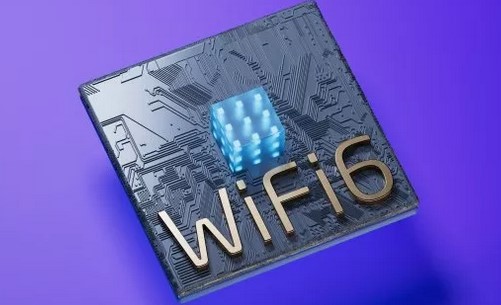

WiFi 6 (formerly: IEEE 802.11.ax) is the sixth generation of wireless network technology, and is the name of the Wi-Fi wireless technology standard. It is a wireless local area network technology created by the Wi-Fi Alliance based on the IEEE 802.11 standard. Wi-Fi 6 wireless communication technology will allow communication with up to 8 devices at a maximum rate of 9.6Gbps.
WiFi6 sixth generation wireless network technology
Features of WiFi 6 wireless technology:
Wi-Fi 6 wireless communication technology mainly uses wireless communication technologies such as OFDMA and MU-MIMO. MU-MIMO (multi-user multiple-input multiple-output) wireless technology allows routers to communicate with multiple devices at the same time, not in sequence communicate sequentially. MU-MIMO allows the router to communicate with four devices (terminals) at once, while Wi-Fi 6 will allow it to communicate with up to eight devices simultaneously. In addition, Wi-Fi 6 wireless technology also utilizes other wireless communication technologies, such as OFDMA (Orthogonal Frequency Division Multiple Access) wireless technology and transmit beamforming, both of which are used to improve transmission efficiency and network transmission capacity, respectively. The maximum transmission rate of Wi-Fi 6 wireless communication technology can reach 9.6Gbps.
MU-MIMO wireless technology
MU-MIMO (Multi-User Multiple-Input Multiple-Output, multi-user-multiple-input multiple-output) means that in a wireless communication system, a base station can serve a series of mobile terminals at the same time, and the base stations make full use of antennas. Air area resources to communicate with multiple users simultaneously. In the case of MIMO with many users in a cell, communication technologies such as time division, frequency division, and code division can be used in the cell to eliminate signal interference, while the elimination of inter-cell signal interference uses some more complex wireless communication technologies.
MU-MIMO wireless technology
OFDMA (Orthogonal Frequency Division Multiple Access)
OFDMA, the full name of Orthogonal Frequency Division Multiple Access, refers to Orthogonal Frequency Division Multiple Access.
OFDMA is an evolution of OFDM wireless technology, combining OFDM and FDMA wireless technology. After the channel is sub-carrierized by OFDM, the wireless transmission technology for transmitting data is loaded on some sub-carriers.
OFDM is a modulation method; OFDMA is a multiple access technology. Users share frequency band resources and access the system through OFDMA.
OFDMA is further divided into subchannel (Subchannel) OFDMA and frequency hopping OFDMA.
The OFDMA multiple access system divides the transmission bandwidth into a series of orthogonal, non-overlapping sub-carrier sets, and then divides different sub-carrier sets to different users to realize multiple addresses. The OFDMA system can dynamically divide the available bandwidth resources to the users who actually need it, and it is very easy to realize the optimal utilization of the system resources. Moreover, because different users occupy non-overlapping subcarrier sets, under ideal synchronization conditions, there is no multi-user interference in the system, that is, no multiple access interference (MAI). The following figure is a schematic diagram of the principle of OFDMA system. Among them, in gray, white and dark gray, the frequency grids represent different sets of sub-carriers, which do not overlap each other in frequency bands and are allocated to different users respectively. The OFDMA scheme can also be regarded as a wireless communication technology that divides and divides the total resources (time, bandwidth, space) in frequency to realize multi-user access.
OFDMA wireless technology
WiFi 6 wireless communication technology defects:
⒈ The electronic part of OFDMA, including FFT and forward error correction (FEC), is more complicated. It also suffers from insufficient power compared to OFDM combined with packet scheduling.
⒉ If there are few sub-carriers allocated to each user, or the same carrier is used in each OFDM symbol, the frequency will have a certain selective fading and the advantages of diversity gain may be partially lost.







